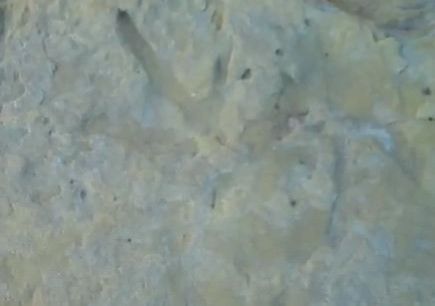Best Collection of Polar Dinosaur Tracks Discovered in Australia [VIDEO]

New insights were given on dinosaur activity of 105 million years ago, through the recent discovery of over 20 polar dinosaur tracks on the coast of Victoria, Australia.
Within two sandstone blocks, at least 24 dinosaur tracks left by a variety of dinosaurs were discovered, providing the most extensive evidence of dinosaur footprints in Victoria to date.
Lower Cretaceous strata of Victoria have yielded the best-documented assemblage of polar dinosaur bones in the world.
However, more than100 years of research in Victoria has resulted in only four documented dinosaur tracks.
"These tracks provide us with a direct indicator of how these dinosaurs were interacting with the polar ecosystems, during an important time in geological history," said Emory University paleontologist Anthony Martin, who led the research.
The three-toed tracks are preserved on two sandstone blocks from the Early Cretaceous Period, according to a press release. The tracks appear to belong to three different sizes of small theropods - a group of bipedal, mostly carnivorous dinosaurs whose descendants include modern birds. Martin spotted ripple marks and trace fossils of what resembled insect burrows in piles of fallen rock.
"The ripples and burrows indicate a floodplain, which is the most likely area to find polar dinosaur tracks," Martin explained.
The tracks were found on the rocky shoreline of remote Milanesia Beach, in Otways National Park. This area, west of Melbourne, is famous for energetic surf and rugged coastal cliffs, consisting of layers of sediment piled up over millions of years.
Riddled with fractures and pounded by waves and wind, the cliffs occasionally shed large chunks of rock, such as those containing the dinosaur tracks, according to the report.
Reported in the journal Alcheringa, the discovery marks the largest and best collection of polar dinosaur tracks ever found in the Southern Hemisphere.
© Copyright IBTimes 2025. All rights reserved.





















